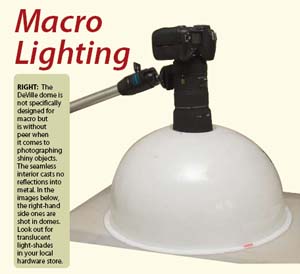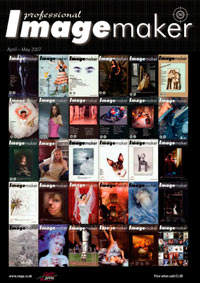articles/Lens/marvellousmacro-page6
Marvellous Macro - part 6 of 1 2 3 4 5 6 7 8 9
by Mike McNamee Published 01/04/2007

Lighting
Your lighting choice depends upon the subject. The shallow depth of field demands small apertures, which, in turn, requires lots of light and/or slow shutter speeds. If your subject is inanimate then almost any lighting will suffice and you have time to construct quite elaborate lighting set ups using tiny mirrors, reflectors, spotlights and fibre optics. For fieldwork, flash reigns supreme as it can provide an excess of light at the close working distances and the only decision to be made is that of light modifier. Here again the amount of light available is such that the modifier can be relatively inefficient and the gun will still allow you to use f16 or f22 even at your D-SLR lowest ISO setting. The choice of manual flash setting or automatic is a personal one. Manual has the advantage that it is not influenced by the background, which could be a significant distance away, in terms of the inverse square law, even if it looks quite close. For similar reasons using a set white balance (ie 'flash') is preferred to 'automatic' which will be heavily influenced by the subject's surroundings.

the most even lighting, especially of reflective subjects, the DeVille domes are in a league of their own, nothing comes even close to the same lighting quality and absence of distracting reflections, (see www.bobrigby.com). For more occasional use, lampshades, tissue-paper tents and even eggshells have been pressed into service. For slightly largerscale work we have even gone as far as skinning a child's play house with diffusing plastic, to act as a light tent.
Please Note:
There is more than one page for this Article.
You are currently on page 6
- Marvellous Macro page 1
- Marvellous Macro page 2
- Marvellous Macro page 3
- Marvellous Macro page 4
- Marvellous Macro page 5
- Marvellous Macro page 6
- Marvellous Macro page 7
- Marvellous Macro page 8
- Marvellous Macro page 9
1st Published 01/04/2007
last update 09/12/2022 14:56:31
More Lens Articles
There are 30 days to get ready for The Society of Photographers Convention and Trade Show at The Novotel London West, Hammersmith ...
which starts on Wednesday 14th January 2026





